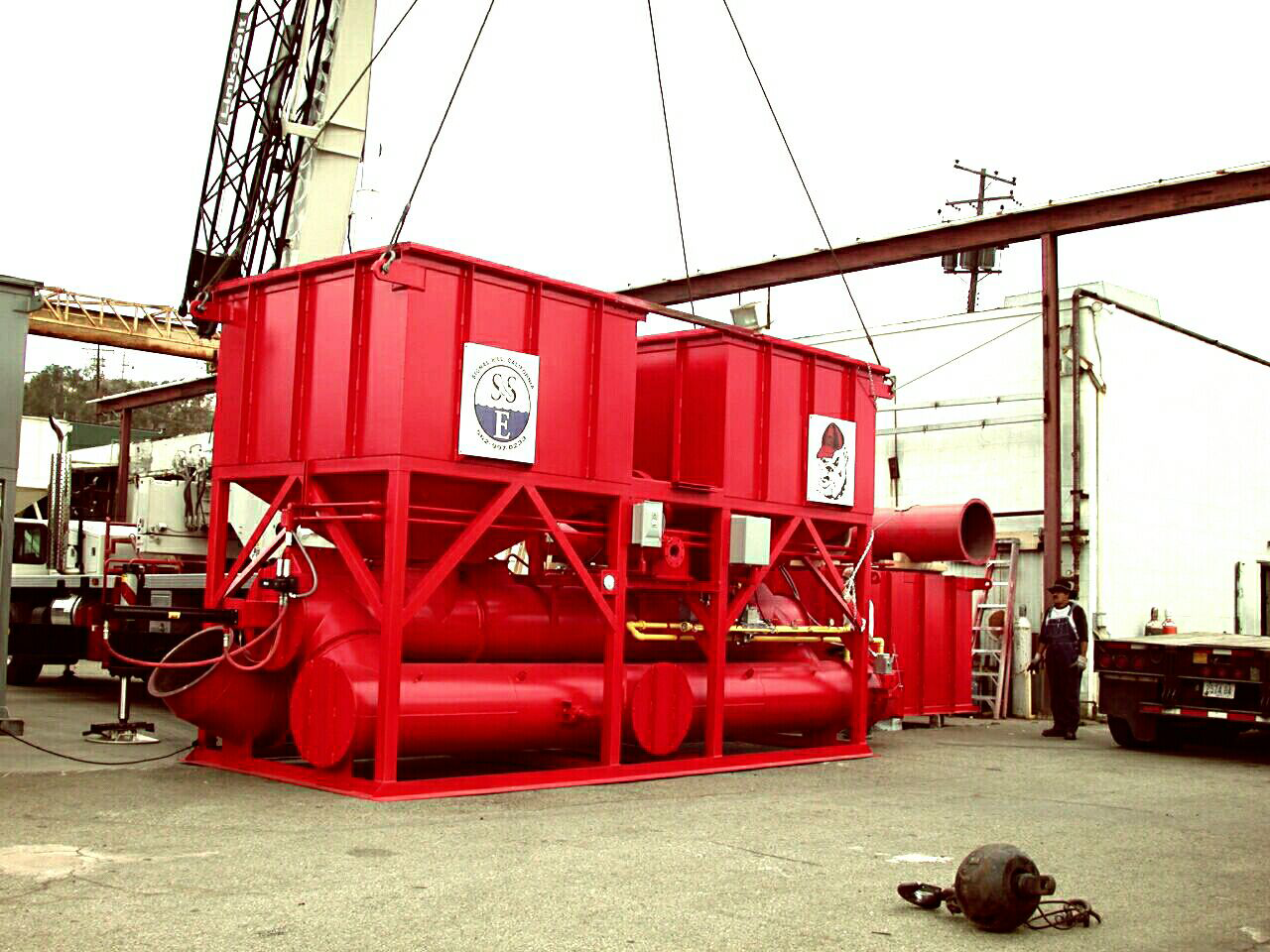
Advancing NOx-Reduction Strategies in Direct-Fired TOs
June 23, 2025 5:07 amSpotlight on Modern Emission Standards: The Importance of Nitrogen Oxides (NOx) Reduction
In our journey towards a cleaner and more sustainable environment, one pivotal aspect that demands our attention is the reduction of nitrogen oxides (NOx) emissions. NOx-reduction strategies in direct-fired TOs are crucial in meeting modern emission standards and mitigating the harmful impacts these pollutants impose on public health and the environment. As regulatory bodies worldwide tighten the emissions standards, industries must adopt advanced and efficient methods to control and reduce NOx emissions. By focusing on effective NOx-reduction strategies, we can significantly contribute to improving air quality and reducing the formation of ground-level ozone and fine particulate matter, both of which are detrimental to human health and ecosystems.
Direct-Fired Thermal Oxidizers (TOs) Explained: Table-Setting the Stage for NOx Reduction Strategies
Direct-fired thermal oxidizers (TOs) are essential tools in the fight against industrial air pollution. These systems are designed to destroy volatile organic compounds (VOCs), hydrocarbons, and other hazardous air pollutants by oxidizing them at high temperatures. However, the operation of TOs also results in the formation of NOx as a byproduct of combustion. Understanding how TOs work provides a foundation for implementing effective NOx-reduction strategies. In a typical direct-fired TO, the contaminated air stream is introduced into a combustion chamber where it is heated to between 1,400 and 1,800 degrees Fahrenheit. The high-temperature environment ensures that the pollutants are converted into less harmful substances like carbon dioxide and water vapor, but this process also favors the formation of NOx.
The Evolution of NOx-Reduction Strategies in Direct-Fired TOs: A Necessary Environmental Response
Over the years, we have seen a significant evolution in NOx-reduction strategies to address the environmental and health concerns associated with NOx emissions from direct-fired TOs. Initially, the focus was on simply achieving high destruction efficiencies for VOCs and other pollutants, with limited concern for NOx emissions. However, as scientific understanding of NOx-related issues and regulatory demands have advanced, our approaches have evolved to prioritize NOx reduction without compromising the performance of TOs.
One of the common strategies implemented includes selective non-catalytic reduction (SNCR) and selective catalytic reduction (SCR), which involve injecting reagents like ammonia or urea into the combustion process to neutralize NOx. Another approach is to optimize the combustion process itself by controlling the air-to-fuel ratio and temperature to reduce the formation of NOx during combustion. These strategies, along with emerging innovative techniques, reflect our commitment to addressing the NOx challenge and ensuring that our operations align with stringent environmental standards.
Digging Deeper: How NOx-Reduction Strategies in Direct-Fired TOs Work
Direct-Fired Thermal Oxidizers, or TOs, are pivotal in waste gas treatment across various industrial sectors. To effectively reduce NOx emissions, incorporating NOx-reduction strategies in direct-fired TOs is imperative. By leveraging primary and secondary reduction methods, we can significantly diminish NOx levels. Primary strategies focus on optimizing the combustion process itself, which includes adjusting the air-to-fuel ratio, employing staged combustion, and utilizing low-NOx burners. On the other hand, secondary strategies involve post-combustion techniques such as Selective Catalytic Reduction (SCR) and Selective Non-Catalytic Reduction (SNCR). These methods are introduced as the combustion gases pass through the post-combustion zone, ensuring further NOx reduction.
Real World Impact: Case-Studies of Successful NOx-Reduction Strategies in Direct-Fired TOs
Examining the real-world impact of these strategies, we find numerous successful case studies. For instance, one prominent example involves a large manufacturing company facing stringent NOx emission targets. They implemented a combination of low-NOx burners and an SCR system in their direct-fired TO. The results were remarkable. NOx emissions were reduced by over 80%, enabling the company to meet regulatory standards and improve air quality in the surrounding community.
Another compelling case is a mid-sized chemical processing plant that drastically cut its NOx output through staged combustion techniques and SNCR. Initially, NOx levels exceeded permissible limits. However, after deploying these NOx-reduction strategies in direct-fired TOs, the facility witnessed a 70% decrease in NOx emissions, showcasing the efficacy of these approaches.
Future Directions: Exploring Emerging Innovations in NOx-Reduction Strategies for Direct-Fired TOs
As technology advances, new innovations in NOx-reduction strategies for direct-fired TOs continue to emerge. We are witnessing the rise of hybrid systems that combine both primary and secondary reduction techniques, offering unprecedented efficiency. Additionally, advanced digital monitoring systems are gaining traction. These systems utilize real-time data to optimize combustion conditions dynamically, ensuring continuous NOx minimization.
Another promising development involves alternative fuels. By integrating fuels with inherently lower nitrogen content, such as hydrogen or biogas, we can further reduce NOx formation during combustion. Furthermore, novel catalytic materials are being explored, showcasing superior activity and durability compared to conventional options. These advancements hold the potential to significantly elevate the performance of SCR and SNCR systems.
Key Benefits of Emerging Technologies:
- Enhanced NOx reduction efficiency
- Real-time optimization of combustion conditions
- Increased system durability and lifespan
- Potential use of environmentally friendly alternative fuels
- Improve regulatory compliance and air quality
In conclusion, as more industries seek to align with rapidly evolving emission standards, it becomes increasingly important to adopt and innovate on NOx-reduction strategies in direct-fired TOs. By continuing to integrate these advanced techniques, we can achieve significant environmental benefits, foster sustainable industrial practices, and contribute to a cleaner future.
Did you know? Employing advanced NOx-reduction strategies in direct-fired thermal oxidizers not only helps meet stringent emission standards but is also a critical step towards green manufacturing.
NOx-Reduction Strategies in Direct-Fired TOs: A Multi-Benefit Approach to Emission Control
As we explore the landscape of modern emission standards, the multi-faceted advantages of effective NOx-reduction strategies in direct-fired TOs emerge as clear. Beyond merely adhering to regulatory mandates, these strategies deliver a host of environmental and economic benefits. By reducing harmful nitrogen oxides, we not only protect air quality but also enhance operational efficiency and energy savings. Such multi-benefit approaches pave the way for sustainable industrial growth, ensuring compliance with stringent environmental standards while concurrently supporting business sustainability.
Rise of Green Manufacturing: The Role of NOx-Reduction Strategies in Sustainable Industries
The industrial sector is at the forefront of a green revolution, driven by advancements in emission control technologies. NOx-reduction strategies in direct-fired TOs play a pivotal role in this transformation. Our commitment to developing and implementing these strategies positions us as leaders in fostering eco-friendly manufacturing environments. This commitment not only benefits the planet but also aligns with the growing consumer and stakeholder demand for corporate responsibility. By adopting NOx-reduction measures, industries can showcase a proactive stance toward environmental stewardship while achieving regulatory compliance.
Final Thoughts: Embracing NOx-Reduction Strategies in Direct-Fired TOs for a Cleaner Future
In conclusion, the significance of adopting NOx-reduction strategies in direct-fired TOs cannot be overstated. Our detailed case studies highlight the tangible benefits that these strategies bring to various industries. From improving air quality to fostering sustainable business practices, the advantages are clear and compelling. As we continue to innovate and refine our approaches, we stand at the cusp of a cleaner, greener future for industrial operations. By steadfastly embracing these strategies, we not only fulfill our environmental obligations but also drive a powerful narrative of proactive sustainability.
FAQ
What are the environmental benefits of implementing NOx-reduction processes in our direct-fired thermal oxidizers?
Adopting NOx-reduction techniques in our direct-fired TOs significantly decreases the emission of nitrogen oxides, which are harmful pollutants. Consequently, it leads to improved air quality as well as a reduction in acid rain and the prevention of various respiratory issues in humans. Furthermore, these strategies contribute to minimizing the overall environmental footprint of industrial operations, supporting the broader objectives of sustainable development and ecological conservation.
How do NOx-reduction methods enhance operational efficiency and energy savings?
Employing NOx-reduction measures can lead to a more efficient combustion process, potentially lowering fuel consumption and resulting in energy savings. Additionally, these strategies may extend the lifespan of our equipment by decreasing the corrosion rates within the oxidizers, thereby optimizing operations and reducing maintenance costs over time. This, in turn, contributes to improved economic gains and a competitive edge in green manufacturing.
Can NOx-reduction strategies affect our compliance with regulatory standards?
Yes, incorporating NOx-reduction measures is essential to meeting or exceeding regulatory emissions standards. By staying ahead of these requirements, our facilities can avoid penalties and ensure uninterrupted operations. Moreover, it prepares us for future regulations, as we anticipate stricter emission guidelines as part of global efforts to combat climate change and protect public health.
What role does NOx control play in the rise of green manufacturing?
NOx control is a cornerstone in the rise of green manufacturing, aligning with the growing demand for sustainable practices. By integrating NOx-reduction techniques, we not only mitigate environmental impacts but also demonstrate our commitment to corporate responsibility. This can lead to enhanced brand reputation, customer loyalty, and potential market advantages as consumers increasingly favor eco-conscious companies.
What are some emerging innovations in NOx-reduction for direct-fired TOs that we are exploring?
Our pursuit for excellence in environmental stewardship has led us to explore a variety of emerging innovations, including advanced burner technologies and process optimization through computational fluid dynamics. We are also investing in research for alternative low-NOx fuels and the integration of renewable energy sources to power our direct-fired TOs. These forward-thinking approaches are paving the way for not just compliance, but leadership in sustainable industrial operations.
Categorised in: Blog

